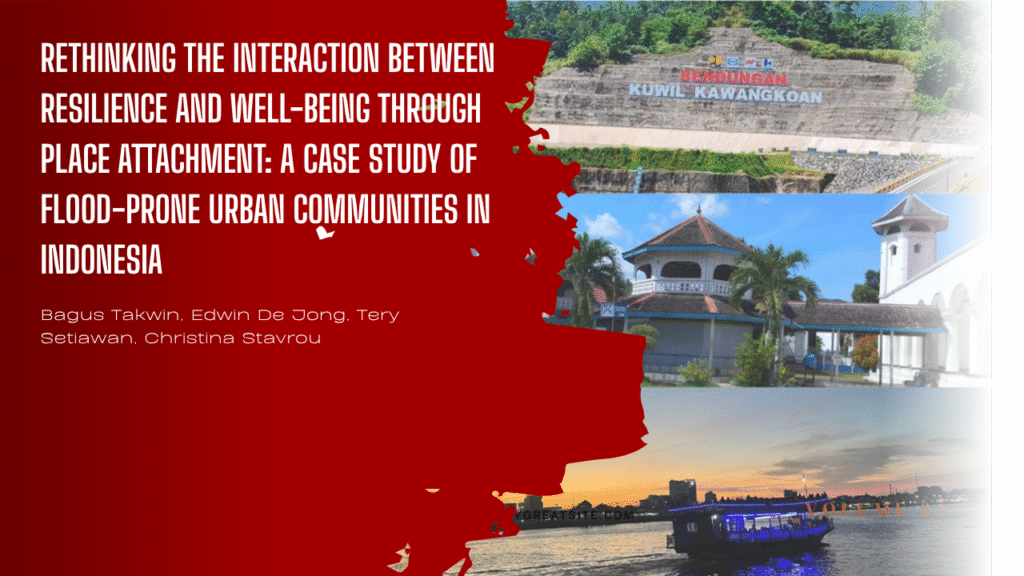Abstrak
This study investigates the extent to which risk perception regarding disasters among individuals living in slum
areas interrelates with their material well-being in determining their place attachment, which may affect their
household resilience. To assess this, we take relevant measures from previous studies and run a confirmatory
factor analysis to test their validity. All the measures are shown to have a good fit with the data.
Our findings reveal a significant mediational relationship between measures of material well-being and household
resilience through place attachment although, counterintuitively, the mediated relationship between subjective
material well-being and household resilience was negative. The mediated relationship is only valid for the
subjective material well-being predictor and among those with a high level of risk perception.
These findings suggest that risk perception determines the way an individual’s subjective material well-being
predicts their attachment to their living place, which relates to their household resilience.


